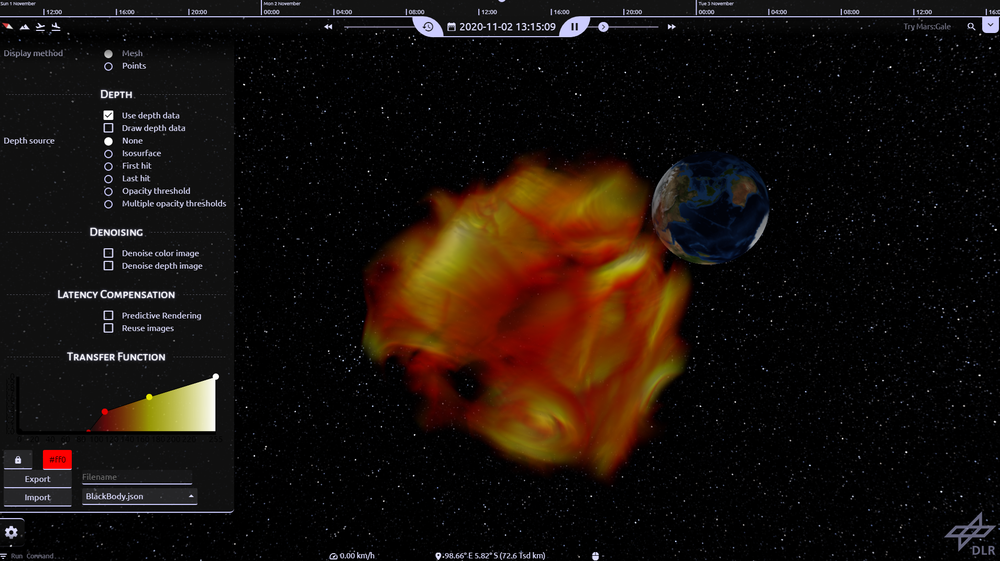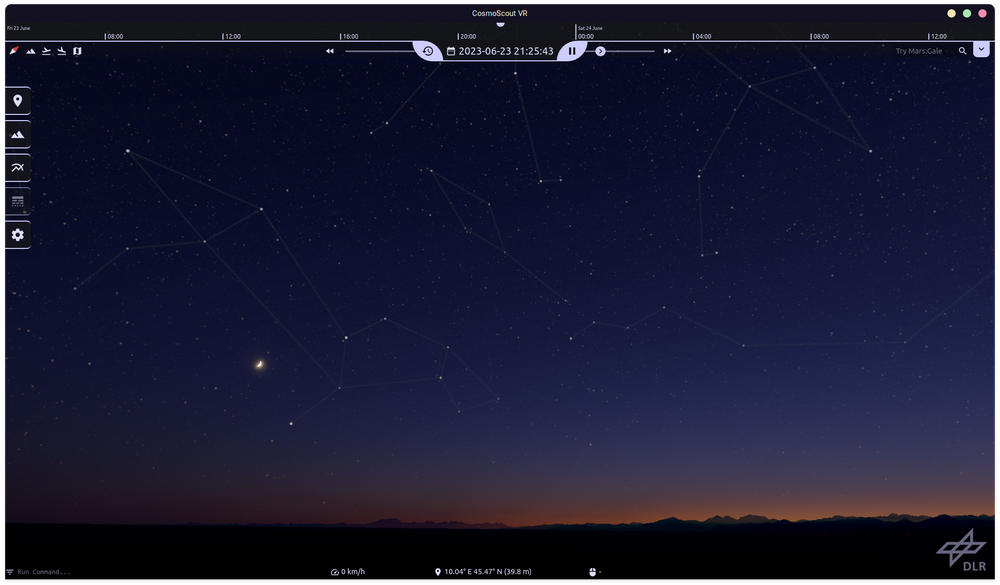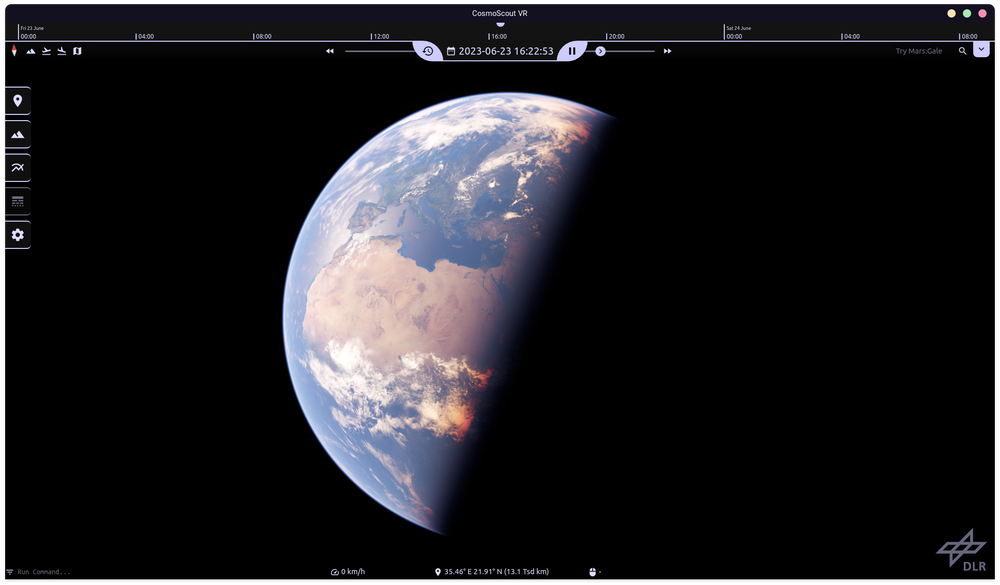CosmoScout VR - open-source simulation of our Solar System



CosmoScout VR is an open-source simulation of our solar system developed at the Institute of Software Technology at the German Aerospace Center (DLR). It is primarily aimed at the interactive visualisation of huge remote sensing products in conjunction with large, temporally and spatially high-resolution simulation data.
CosmoScout VR has built-in support for virtual reality devices such as stereoscopic multi-projection systems like CAVEs or display walls, but can also be used on conventional head-mounted displays or desktop PCs.
The development of CosmoScout VR started as part of the FP7 CROSS DRIVE project. Since then, the software has been further developed and now simulates the entire solar system. It is currently used as the basis for several projects at the Institute. New scientific data visualisation methods, such as a volumetric representation of space weather data, are continuously being integrated.

To display large data sets and entire planets in real time, CosmoScout VR uses advanced rendering algorithms with a high level of detail. Terrain data is streamed from Web Map Services (WMS) and rendered with high precision using the HEALPix projection. The advantage of this projection is that it avoids singularities at the poles, which are common in other projections. CosmoScout VR is based on widely used software libraries; for example, it uses NASA's SPICE library for time-dependent positioning of celestial objects, the Chromium embedded framework for drawing the modular HTML-based user interface, and OpenGL for rendering the solar system.
Most of CosmoScout VR's rendering functions are loaded from plug-ins at runtime. This allows rapid prototyping as new data visualisation components can be developed without affecting the core modules of the software.

